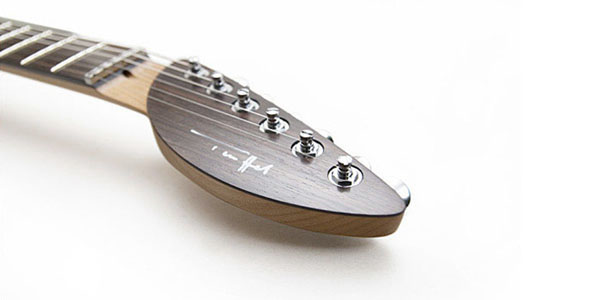
 |
Both the body and the neck are made from Red Alder. Only highly selected Alder timber with a high stiffness can be used for the guitar necks. The timber gets treated to increase the strength in the neck / headstock zone. As a result the niwa's neck has much more stability than a neck from Honduras Mahogany. The new 2-way truss rod supports the neck in combination with a maple inlay. |
|
 |
Like on the birdfish, the neck rests in a pocket with the same round surface as the neck on its back. The handpolished neckscrews of stainless steel attach to three threaded inserts which are fixed in the neck. To achieve maximal precision, the outside thread of the inserts is cut exactly into the neck, too. | ||
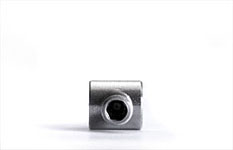 |
Also shown here: the 2-way-truss rod from hardened stainless steel. Its weight is 48 grams (1.7 oz). Just 1.7 oz! | ||
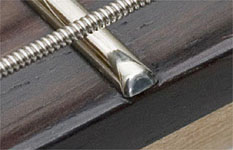 |
The Pau Ferro fingerboard has 22 frets, each fret edge being rounded and polished by hand. The fret slots end just before the neck edge so the frets can't stick out and affect playability during dry times in the winter. | ||
 |
The fret markers are two-tone: outside there is a black circle for visibility under bright conditions. Inside I have included phosphorescent minerals to let the dots glow on a dark stage. | ||
 |
Here you can see the intersection of the neck and the headstock. The headstock is very strong and the tuners are therefore embedded on the back. The neck's shape is slightly assymetrical. | ||
 |
The tuners from Gotoh are the lightest locking tuners I know. The weight saved goes to headstock: wood sounds better than tuners. | ||
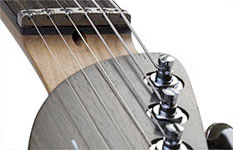 |
The headstock - neck changeover is reinforced. In the crossover zone there is no router pocket for the truss rod nut. Just a little hole of 4 mm (0.16 inches) for the allen wrench. | ||
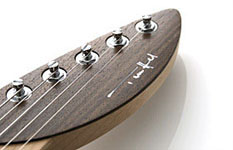 |
A Pau Ferro cover of 2 mm (0.08 inches) is to reinforce the headstock. The machine washers are embedded into the rosewood. | ||
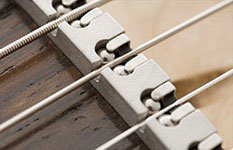 |
A roller nut from LSR guarantees the clean function of the vibrato. Interfering resonances of the string section between nut and tuners are absorbed by the little rubber inlays behind the nut. | ||
| copyright by Ulrich Teuffel | |||